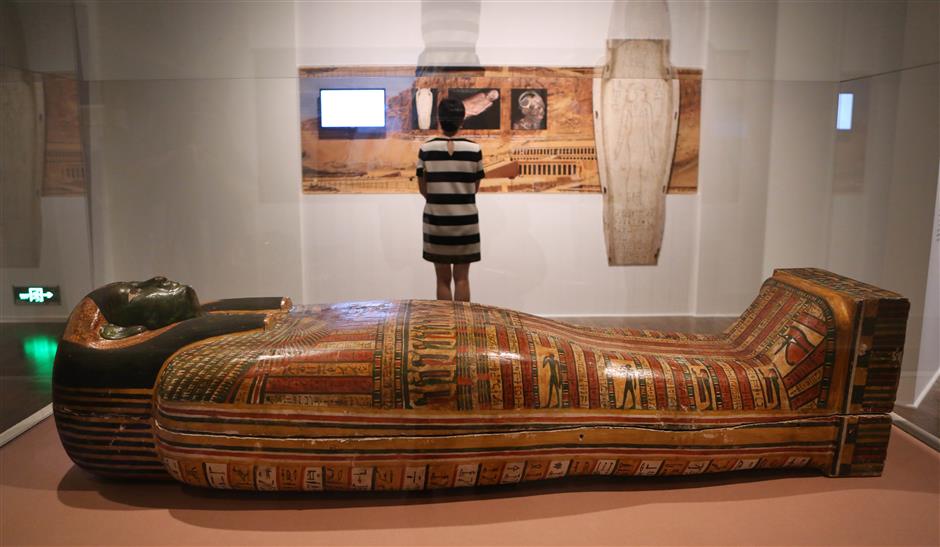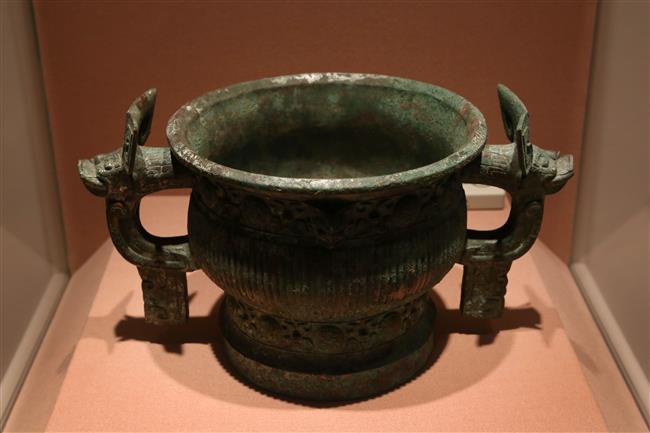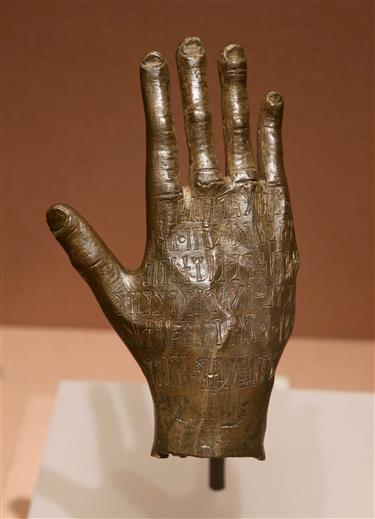'History of the World' exhibit pulls in the crowds

Hebrew astrolabe, brass, 1345-1355, probably from Spain
Patience is a virtue that visitors to Shanghai Museum must desperately be in possession of. The recent opening of “A History of the World in 100 Objects from the British Museum” has proved to be extremely popular, forcing Shanghai Museum to set a daily quota of 8,000 visitors.
But the quota usually fills up few hours after the opening.
To streamline visitors, Shanghai Museum has now set up a special entrance for those visiting the British Museum exhibition at the southern gate. For other exhibits, people have to use the northern entrance.
Despite that, the queues haven’t shortened as visitors are forced to wait in the heat and brave the large crowd all the way up to the third floor — the site of the exhibition. The museum allows only 250 visitors at a time inside the hall.
A WeChat reservation option was tried out for the first time but the booking site collapsed right on the first day.
“This exhibition is more academic,” says Zhan Hao, a local art critic. “I suggest that visitors prepare ahead of the trip by reading some books or materials related to the 100 objects on display here. Otherwise they will just glance through these things hurriedly.”
Zhan also points out that the exhibition was not appropriate for children.
Inspired by the highly acclaimed 2010 radio series and book, which was produced in partnership with BBC and Penguin Book, this exhibition tells one version of an extraordinary story — the history of the world.
Using 100 key objects from British Museum’s encyclopedic collection, the exhibition highlights the remarkable stories that are revealed through the most humble objects, such as a tiny stone seal that led to the rediscovery of a lost civilization, and fragments of pottery discarded on a beach in Africa that point to the vast distances travelled by early traders across the Indian Ocean.
“All these objects come together to tell a global story that spans continents and millennia,” says Belinda Crerar, curator of the exhibition.

Shepenmehyt's coffin is one of the most popular exhibits at the "A History of the World in 100 Objects" exhibition in Shanghai Museum.
The public interest, however, was more geared to the mummies of the ancient Egyptians. Although there is no real mummy, the inner coffin of Shepenmehyt is invitingly placed at the entrance. In fact, mummy cases from ancient Egypt are excellent examples that led to several interpretations of our history.
Everything — from the translation of hieroglyphs to the scientific analysis of paint — can be used to decipher messages from these coffins.
The coffin on exhibit here was made for a woman named Shepenmehyt, who is depicted on the lid with her face painted green. The coffin illustrates how rewarding the study of a single object can be. It revealed complex information about Shepenmehyt herself and about ancient Egyptian faith and funerary practice.
However, there is one further information about the coffin — or more accurately about the contents it was designed to hold — which only came to light recently. CT scans of the mummy inside the coffin revealed it to be the body of a man.
How or when a male body was placed inside the coffin remains a mystery. A further intriguing discovery was made when the skull of this man was scanned. An implement, presumably used to extract the brain from the skull during the embalming process, remains lodged inside. So the coffin contained a boy that wasn’t meant to be there, which in turn hid an object that wasn’t meant to be there either.
“Shepenmehyt’s coffin was created to address the question of how to prepare for death and what awaits humankind afterward — a universal concern that has occupied the minds of human societies from our earliest ancestors right up to the modern day. This is one of the reasons why a history of things is so satisfying; objects can reveal information that has remained undiscovered or misunderstood for thousands of years,” Crerar says.
It is better for visitors to have some basic knowledge of these objects before heading to the exhibition, otherwise the mummy case would merely be just a mummy case without sending something profound.

A bronze Chinese ritual vessel from the Western Zhou Dynasty (1100-1000 BC)
Another highlight is a prehistoric stone tool with a spear tip left behind by the Clovis people, one of the earliest cultures that we know to have lived in North America.
The Clovis were probably descendants of early humans who arrived in America over an Ice Age land bridge connecting what is now Russia and Alaska, across the Bering Strait. The spear tips the Clovis left are evocative reminder of these early pioneers.
Other objects, like the bronze hand from Yemen, are relics of religions that no longer exist. The engraving on the hand names one of the gods, who was worshipped in a Yemen hill town around AD 100-300.
It is also an extraordinary personal object, since the broken little finger and the usually spoon-shaped nails seem to suggest that this hand was cast from life. The religion honored by the hand may have died, but the object remains to help us understand this lost faith.
Eight of the 100 objects on display in Shanghai are Chinese antiques including a Chinese ritual vessel from the Western Zhou Dynasty (1100-1000 BC).
According to Li Feng, deputy director of Shanghai Museum, there are more than 100 art derivatives either designed directly from the British Museum or developed by Shanghai Museum that are available at the museum’s gift shop, varying from biscuits, jewelry to stationery and toy figures.
Most of them were sold out on the first day.
“We didn’t expect the art derivatives to be so popular,” Li says. “We immediately asked our suppliers to deliver more to the museum.”

The bronze hand from Yemen
“A History of the World in 100 Objects from the British Museum”
Date: Through October 8, 9am-5pm
Venue: Shanghai Museum, 201 People’s Ave
Admission: Free















